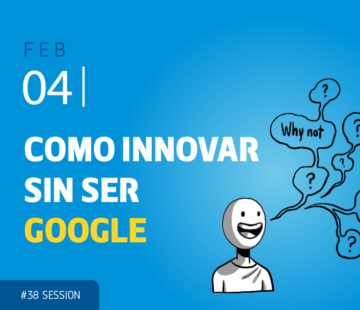Co-Session #25 (II): Building our own ideal organizational model

Besides hosting our 25th Co-Session in their new headquarters, AGBAR also offered their own practical example of a company currently active in the two main topics of the day: creating relationships with startups, and bringing some of the strategies used by startups into consolidated organizations.
Manuel Cermerón, director of the company, had already stated that it was clear AGBAR would like to operate more like a startup. To do so, he said, would entail not so much copying existing models but developing their own model: “Beyond the framework’s name, we ultimately must create new dynamics”.
That is the task of the Innovation Department at AGBAR. As Catalina Balseiro and Ramón López explained, this department will implement changes into the working models of each business unit to make them more agile and resolute, and allow them to switch to a result-oriented focus rather than focusing on processes. Another goal will be to reduce traditional aversion to risk by supporting intra-entrepreneurship, and implementing collaborative organizational and management models. Externally, AGBAR has also begun to work with startups and other idea-generating and entrepreneur training programs to explore challenges together.
Demystifying startups
Luis Martín Cabiedes, of Cabiedes & Partners, contributed perhaps the most “politically incorrect” and discordant note with his comments. As someone with years of experience working with startups from his position in one of Spain’s oldest and most successful investment firms, his words shouldn’t be taken lightly. Luis Martín began by questioning the excessive mystification of the essential traits somehow considered exclusive to startups. With one sentence he was able to break down what he considers the false dichotomy in the comparison between startups and consolidated firms: “Many companies that are not startups also want to innovate; moreover they are smart, full of talent, and have values.”
First of all, startups must not always be linked to innovation. Proof of that are the amount of large, consolidated companies that are tremendously innovative (Apple, for example), as well as dozens of startups that have found success by simply copying existing models from other countries or markets. It’s also true that a hierarchical and inefficient organization isn’t exclusive to large, well-established companies. Many entrepreneurs have fallen into the “dollhouse” trap, immediately replicating the structure of a traditional enterprise but on a reduced scale.
What can we learn from Asian startups
Creating and developing startups as a basic element in innovative ecosystems is not exclusive to advanced Western economies. Marta Emerson, vice-president of Scaale, has worked as a business consultant in many Asian countries and offered her point of view on startups reaching beyond our local context. We learned about the bureaucratic complexity inherent to starting a business in China, or the peculiarities in the business world in a country like Kazakhstan where reproducing clichés about Silicon Valley picked up from magazines and movies seems to be the norm; thus proving what an immature startup ecosystem exists.
In Marta’s experience, India is an especially interesting and peculiar case. It is ranked second globally in terms of technological growth, with a new middle class made up of 150 million people, a great interest in education, and a desire to do things as they do in the west. In terms of what she’s learned regarding the differential traits of Indian startups, she lists the following: there is a hunger for success and a higher level of preparation than in many European countries; specializations by states and regions; and the importance of the Indian diaspora in so many countries, which provides a perfect base for international expansion.
Building our own ideal organizational models
After lunch, and to put an end to the day, we had time to design our ideal type of innovative organization. As our starting point, we took the main elements from four of the most interesting recent proposals from the field:
- XLR8 by JP Kotter: A dual operating system. Companies must work with two different “operating systems”, one focused on operations and the other on exploration.
- Open organization by Jim Whitehurst: an organizational system based on the principles of open source permits the agility necessary for current market contexts.
- Running Lean by Ash Maurya: a working methodology focused mainly on startups and based on the principles of the “Lean Startup” by Eric Ries.
- Holacracia by Brian J. Robertson: authority and decision-making process spread out over a network of self-organized, flexible teams.
The challenge: starting out with 20 cards with 20 key concepts (five from each of the four models), we worked in groups to choose five of them and make up the key elements for transforming a company into a fast and agile organization that can react quickly to change, opportunities and challenges while maintaining a sustainable, lasting competitive advantage.
